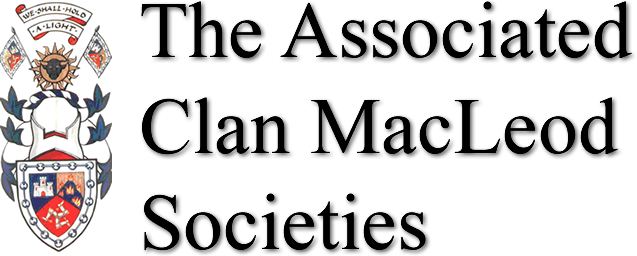Castles and Fortifications associated with the Clan MacLeod
Castles and Fortifications linked to Clan MacLeod are all in the Highlands and Islands of Scotland and are listed alphabetically. A location is provided where possible, along with icons linking to a variety of websites containing information which may be of interest.
Hover over these icons to reveal the identity of linked websites.
If you are looking for a specific castle or fortification on this page, we recommend using your browser’s ‘Find on page’ search option which is usually accessible by clicking ‘ctrl F’.
A note on attribution: images are listed with their creators where known and some are specified by the label CC BY-SA (Creative Commons Attribution-ShareAlike) and a version number: This license means images can be shared, used, and modified, as long as the work is attributed to the creator, and the license used on that new work is the same as the original.
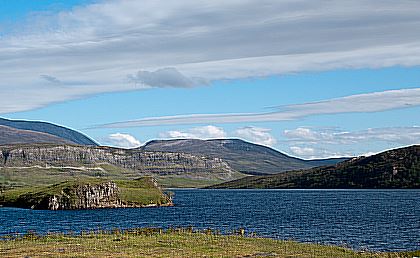
Assynt Castle
Hover on links for identity of websites
Assynt Castle, located four miles northwest of Inchnadamph, on Eilean Assynt, an island in Loch Assynt.
A castle or fortalice on the Isle of Assynt was granted in 1343 to Torkyll M’Cloyd of Lewis by David II, together with grants of certain lands in Assynt. It appears to have been included in subsequent grants of land, particularly in the grant of 1511. In 1585 it was besieged by Clan MacKay of Strathnaver, but the siege was raised by Alexander, Earl of Sutherland. In 1646 it was besieged by Clan MacKenzie, but the siege was abandoned. The castle may have been used as a prison after the clan moved to Ardvreck Castle. It was subsequently abandoned and is now in ruins.
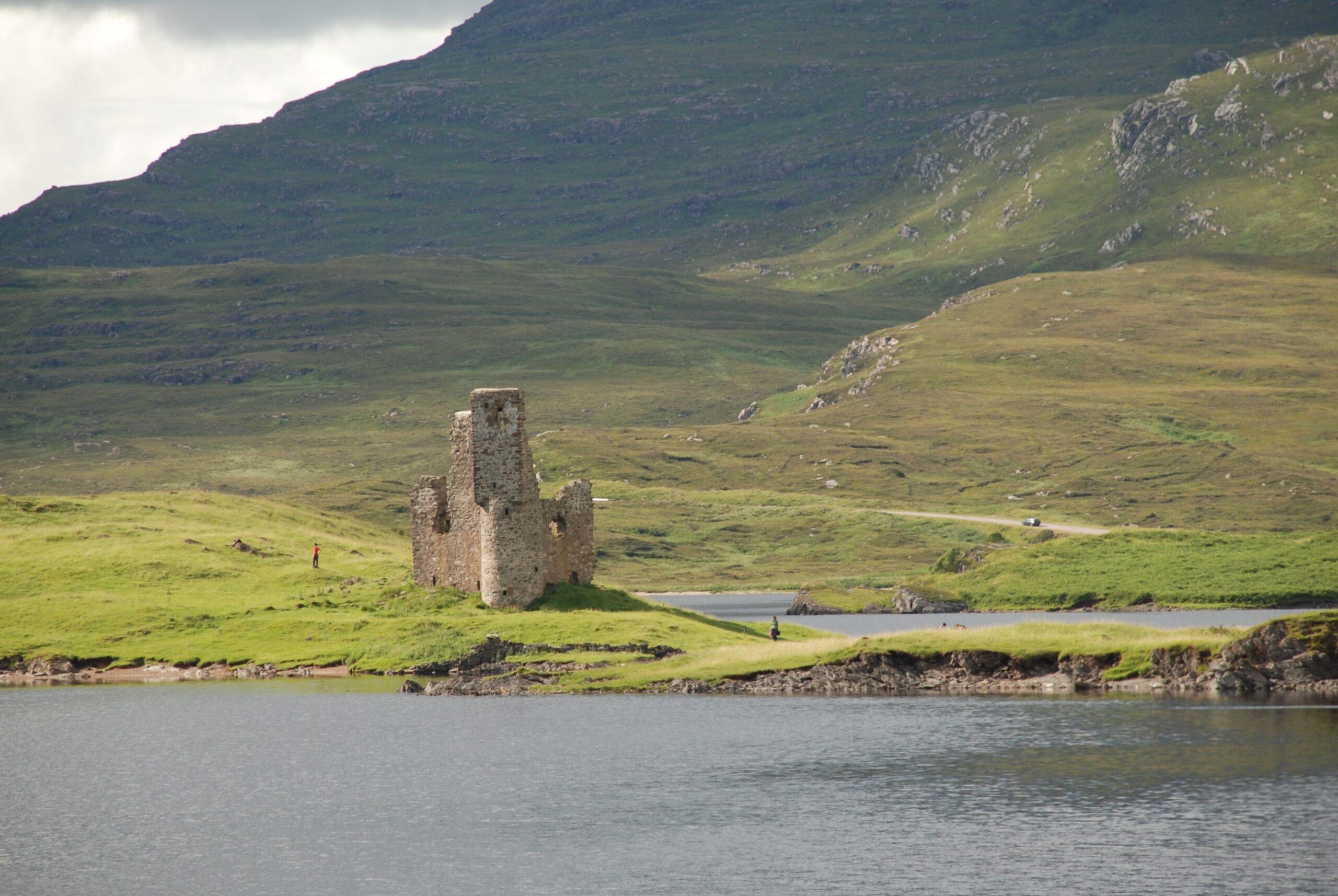
ARDVRECK CASTLE
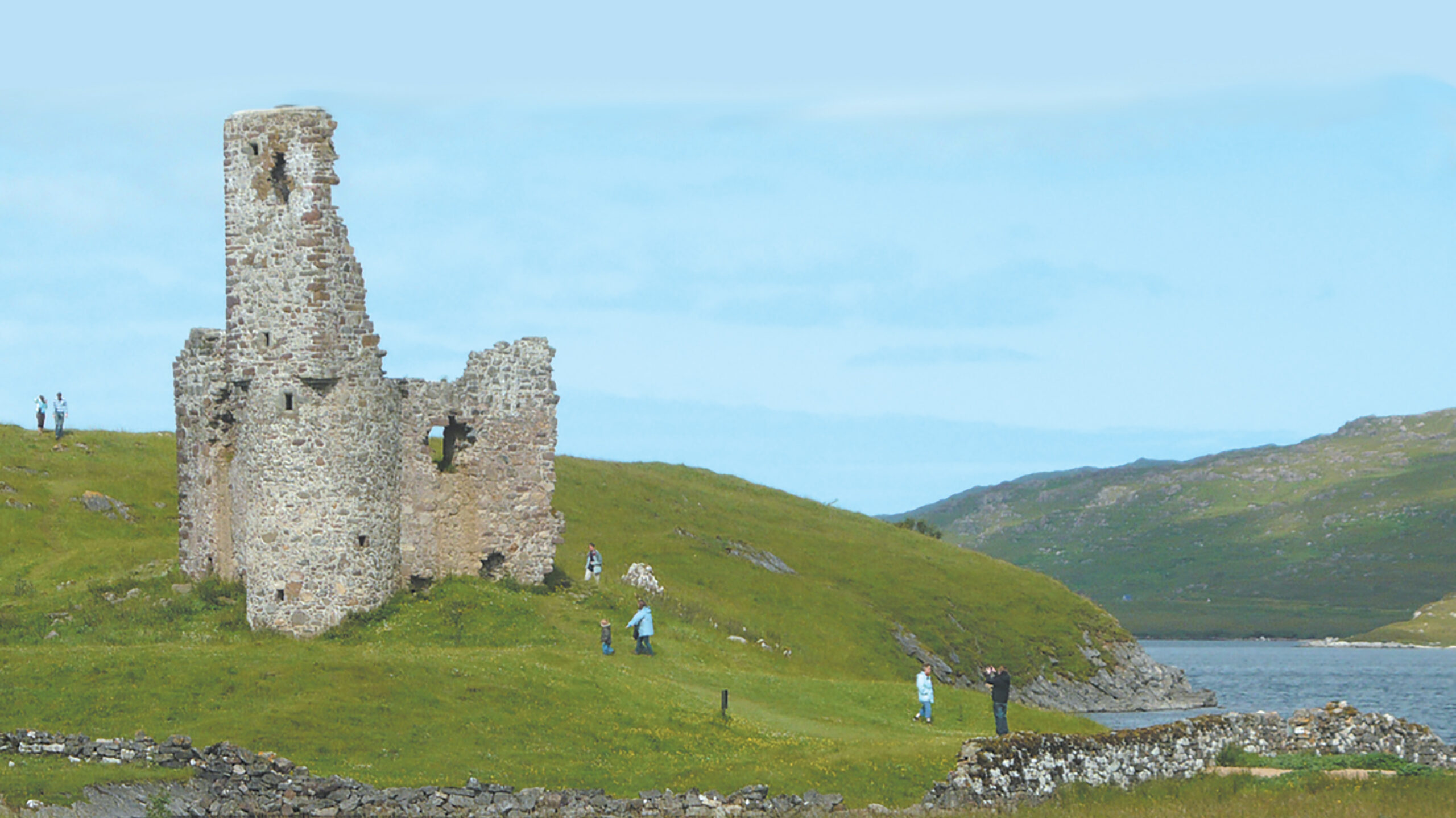
Ardvreck Castle, now ruinous, stands on a rocky promontory in Loch Assynt, Sutherland. The structure dates from about 1490 and was built by the then landowners, the MacLeods of Assynt. It replaced Assynt Castle which was four miles north-west of Inchnadamph.[1]
Ardvreck is notable as the place where the royalist James Graham, 1st Marquess of Montrose was handed over in 1650 to the Covenanter forces by MacLeod, Laird of Assynt, after the Battle of Carbisdale.[1] The true history of this event is unclear. One account is that MacLeod, loyal to the Covenanters, arrested the weary, fleeing, Montrose and held him. Another is that he provided comfortable shelter, but betrayed Montrose for a £25,000 reward.[2][3]
Clan Mackenzie attacked and captured Ardvreck Castle in July 1672,[1] the Earl of Seaforth having been given a ‘Commission of Fire and Sword’ against Neil MacLeod of Assynt. After fourteen days Neil, having been shown the Commission, surrendered to the MacKenzies (MGC V, p.36.) who then took control of the Assynt lands. In 1726 they constructed a more modern manor house nearby, Calda House which takes its name from the Calda burn beside which it stands. A fire destroyed the house in 1737 and both Calda House and Ardvreck Castle stand as ruins today, a picturesque reminder of the area’s past..[4] They are designated as scheduled monuments.[5][6]
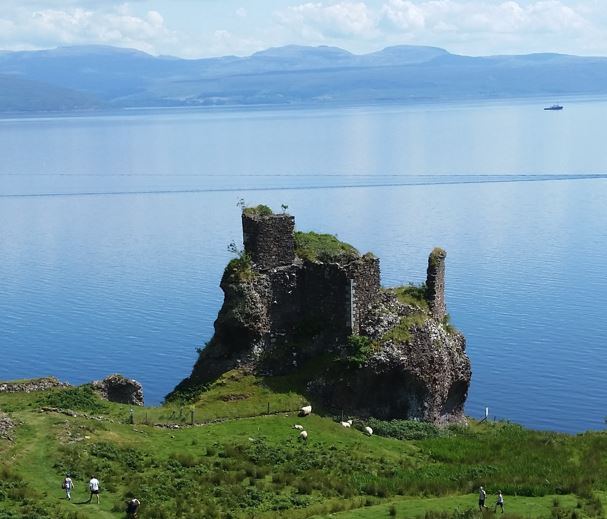
BROCHEL CASTLE
Brochel Castle, situated along the eastern coast of the Isle of Raasay, dates back to the 15th century and was once an important MacLeod stronghold. Like many of the old Hebridean Castles, Brochel’s origins are lost in time. Local legends point to the MacSweens as first building a fortification on the site.
In its more recent form, Brochel Castle would have been built in the early 1500s by the first MacLeod Chief of Raasay, Malcolm Garbh (c 1503-1560) who was given the Isles of Raasay and Rona by his father Malcolm, IX Chief of the MacLeods of Lewis (c 1452-1528). The MacLeod Genealogies say that John Garbh MacLeod (c 1625-1671), VII of Raasay was probably the last to live at Brochel Castle. It is believed that after his death the family moved to a residence on or near the present site of Raasay House. This is logical as by 1671 Clan warfare had virtually ended and Clan Chiefs could afford to opt for a comfortable home rather than a defensive fort.
Today, the ruins of Brochel Castle stand as an intriguing attraction, showcasing the architecture and strategic importance of the past.
An article on Brochel Castle by Peter Macleod is available for download here.
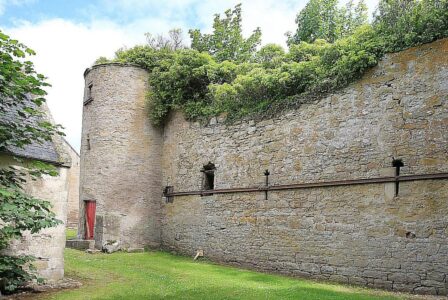
CADBOLL CASTLE
Cadboll Castle near Near Tain in Ross-shire, was built in the early 1300s and is now a ruined L-plan tower house set in the beautiful grounds of Glenmorangie House that replaced it. It was originally held by the Clyne family, then the MacLeods of Cadboll over several generations, but by 1592 passed to the Clan Sinclair
The vaulted interior in the main block of the tower is of an unusually confused construction and arrangement. It may relate to an episode in 1572-4 when Alexander Ross of Balnagown was ordered to make good ‘the doune casting of the battelit tower of Catboll’ by building up the vaults again at an estimated cost of 500 merks.
Sadly much of the east wing was demolished in 1928 and access is strictly private. Historically linked to the nearby Abbey of Fearn, part of the old castle is used as a farm store and the magnificent nearby house for weddings.
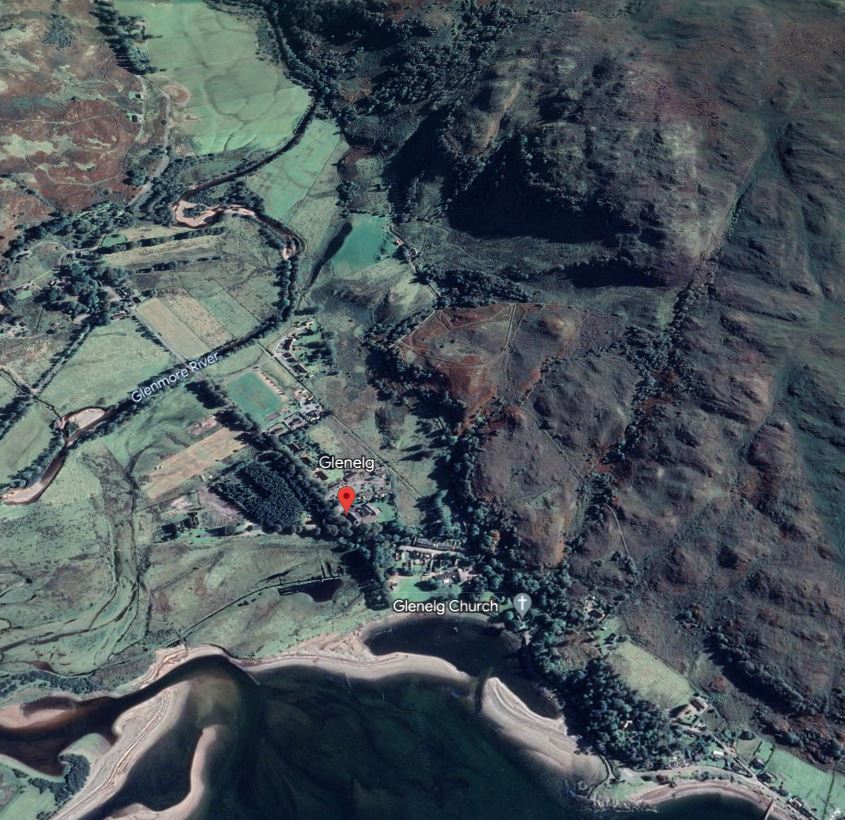
Casteal MhicLeod
Casteal (Caisteal) Mhicleod (or MacLeod’s Castle) situated behind the village of Galldar, between Bernera and Glenelg, is a ruinous fortification situated on the mainland overlooking Skye across the Sound of Sleat. Set at the edge of a precipice, it consists of a semicircular wall of irregular form (internal dimensions 18′ x 34′) occupying the level space of the summit.
The grass-grown wall has some stones still in situ; there is a narrow entrance on the east side, a strong outwork on the north, and a narrow wall forming the south side of the fort which appears to have been used for protection from the precipice.
Probably originally an Iron-age broch or fortification, it was never a castle in the medieval sense but is said to have been last occupied by Alasdair Crotach in the early 16th century, probably as a temporary residence or hunting-lodge.
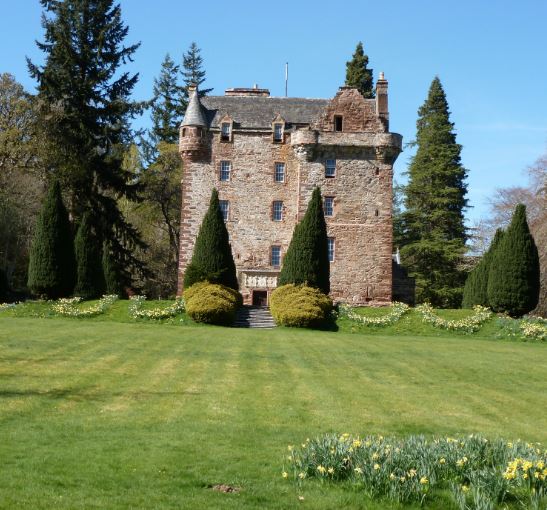
Castle Leod
Castle Leod is the seat of the Clan Mackenzie and home of their Chief, but with links to Clan MacLeod. The castle is in Strathpeffer, in Easter Ross, 15 miles north west of Inverness. It was once the home of Margaret MacLeod, who married the ‘Tutor of Kintail’, Sir Rorie MacKenzie, one of the clan’s most famous chiefs. The castle played a significant role during the Jacobite uprisings, with the Mackenzie chief, known as ‘The Old Fox’, supporting Bonnie Prince Charlie. The castle also boasts connections to the acclaimed author Sir Walter Scott, who visited Castle Leod and used it as inspiration for his novels.
The castle has been lived in by the same family for well over 500 years and is reputedly one of the most beautiful, romantic and unspoilt castles in the Highlands.
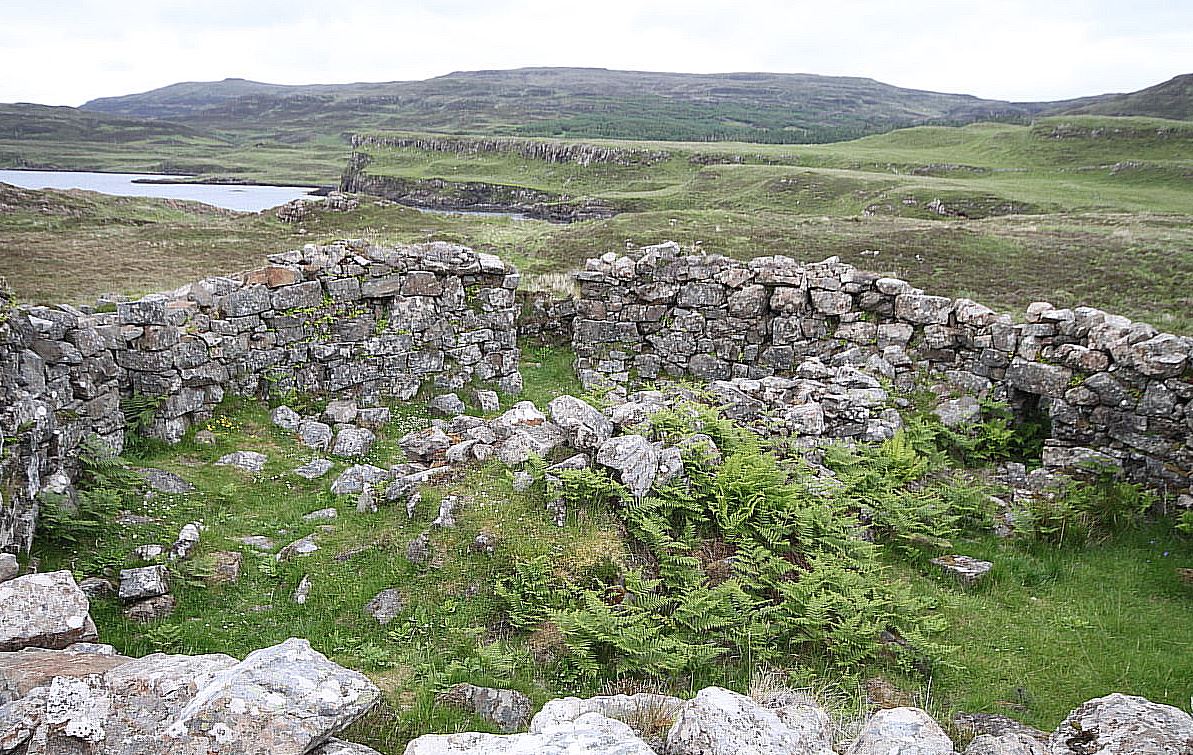
Dun Fiadhairt
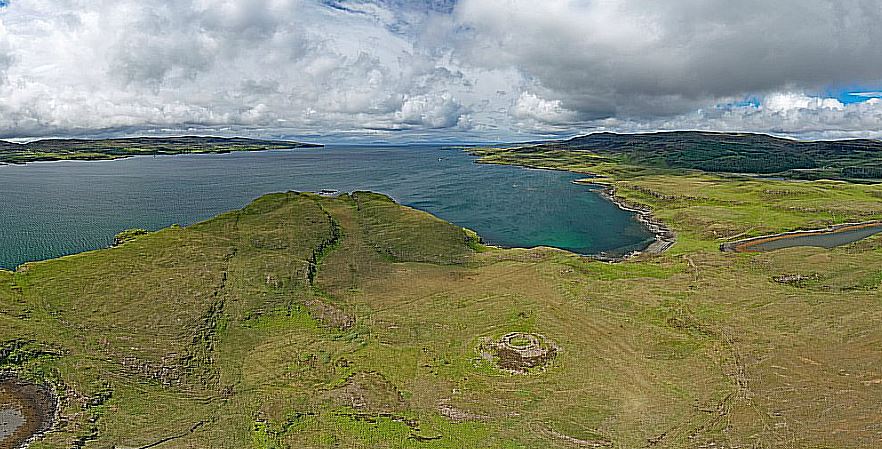
Dun Fiadhairt is an Iron Age broch located on the north coast of the island of Skye, about 3.5 kilometres northwest of Dunvegan. The broch stands on a low, rocky knoll, in the midst of moorland, on a peninsula which juts into the east side of Loch Dunvegan
Apart from proximity to Dunvegan Castle, its connection to the Clan MacLeod comes from an archaeological excavation in 1915 by Austrian-born baroness Hanna von Etinghausen, the widow and second wife of the 25th Chief Norman MacLeod who had supported his clanspeople through the devastating potato famine in the mid-19th century and had been financially ruined in the process.
After Chief Norman’s death in 1895, Hanna married a wealthy Frenchman and became the Countess Vincent Baillet de Latour but her interest in the ancient ruins in Skye continued. She continued to be largely supported by the MacLeod Estate until her death in the 1940s.
Finds from the 1915 excavation included a quantity of pottery, a large amount of “iron refuse”, a fragment of an armlet, several glass beads of various colours, and, of most importance, 59 amber beads in the form of short cylinders which presumably formed a necklace. All these finds now reside in the National Museum of Antiquities in Edinburgh.
An article about the Countess Archaeologist and the Dun Fiadhairt excavation appeared in the October 2022 edition of the Clan MacLeod Magazine (issue no 135). A previous article on Dun Fiadhairt also appeared in issue no 68 of the Magazine in Autumn 1989.
.
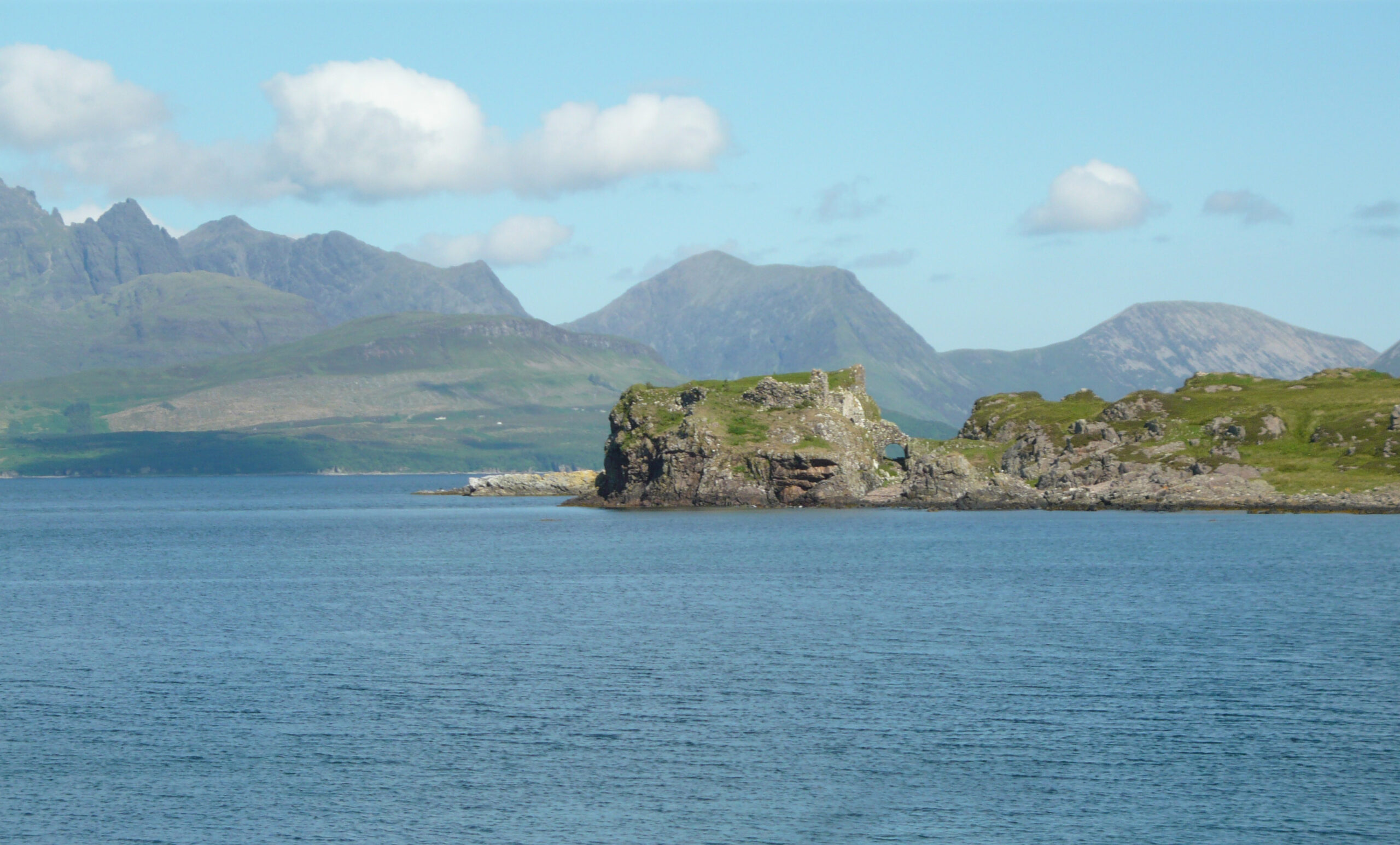
Dunscaith Castle
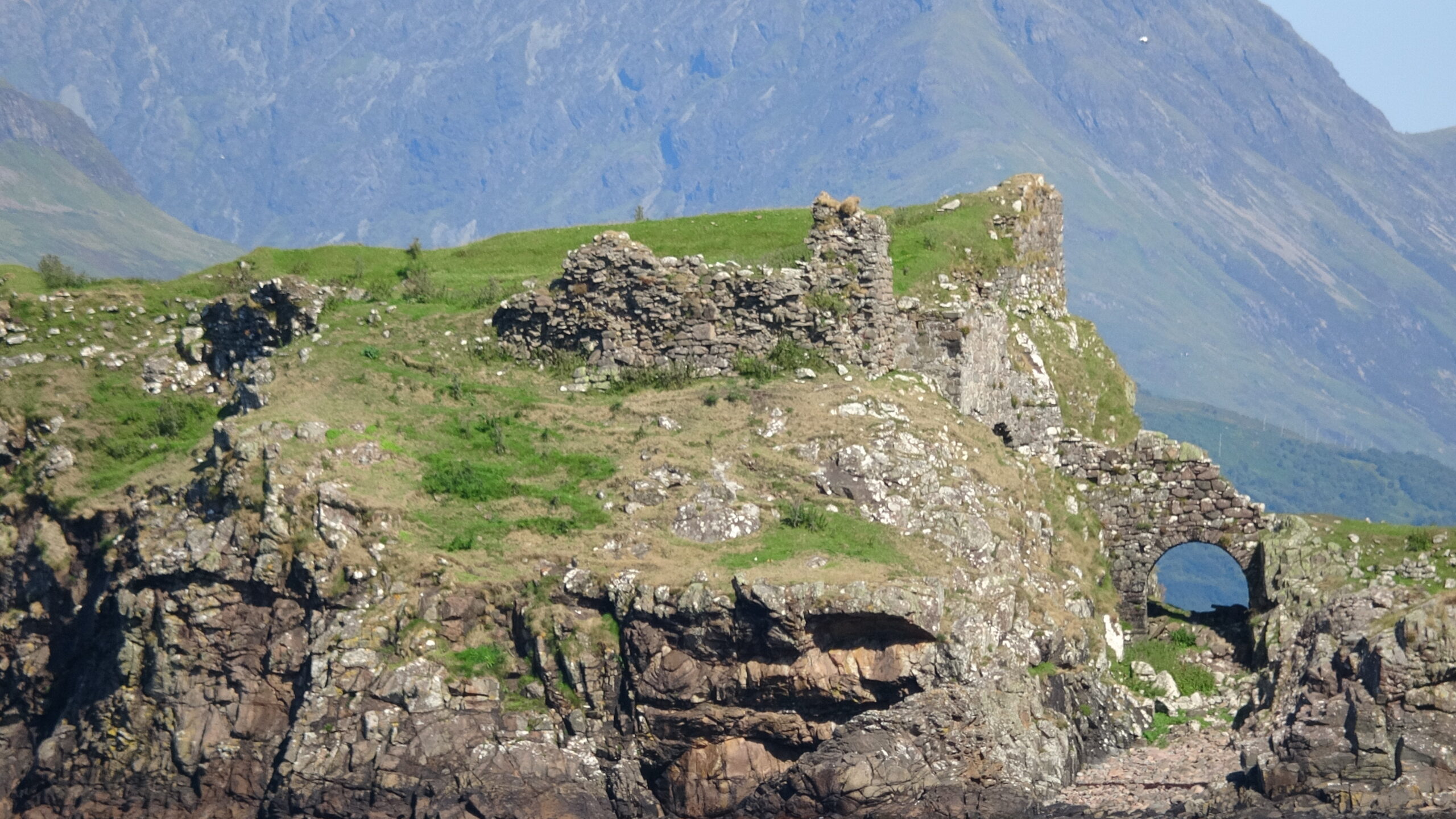
Dunscaith Castle, also known as Dun Sgathaich, Dun Scaich, and Tokavaig, is a ruined castle strategically positioned on a rocky outcrop overlooking the Sound of Sleat on the Isle of Skye.
Also called ‘Fortress of Shadows’, this ancient castle is the legendary home of, and named after, the warrior queen Scáthach, to whose military college the legendary Irish hero Cú Chulainn came in his youth to be instructed in the martial arts.
It was originally held by the MacAskills (a sept of the MacLeods of Lewis), but passed to the MacLeods in the fourteenth century. The MacLeods managed to defend themselves against MacDonald, Lord of the Isles, in 1395 and 1401.
However, along with the rest of Sleat, it was taken over from the MacLeods by the MacDonalds in the mid-fifteenth-century after the Lord of the Isles had acquired the Earldom of Ross (which then included Skye) around 1436.
Today, visitors can explore the atmospheric ruins of Dunscaith Castle and enjoy the panoramic views of the surrounding landscape.
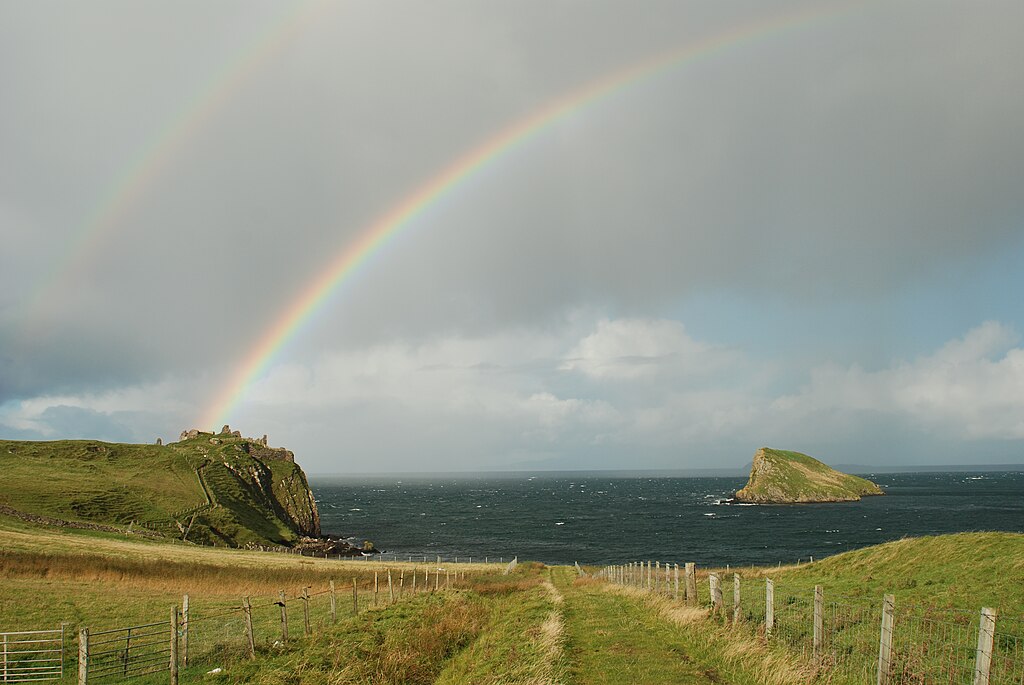
Duntulm Castle
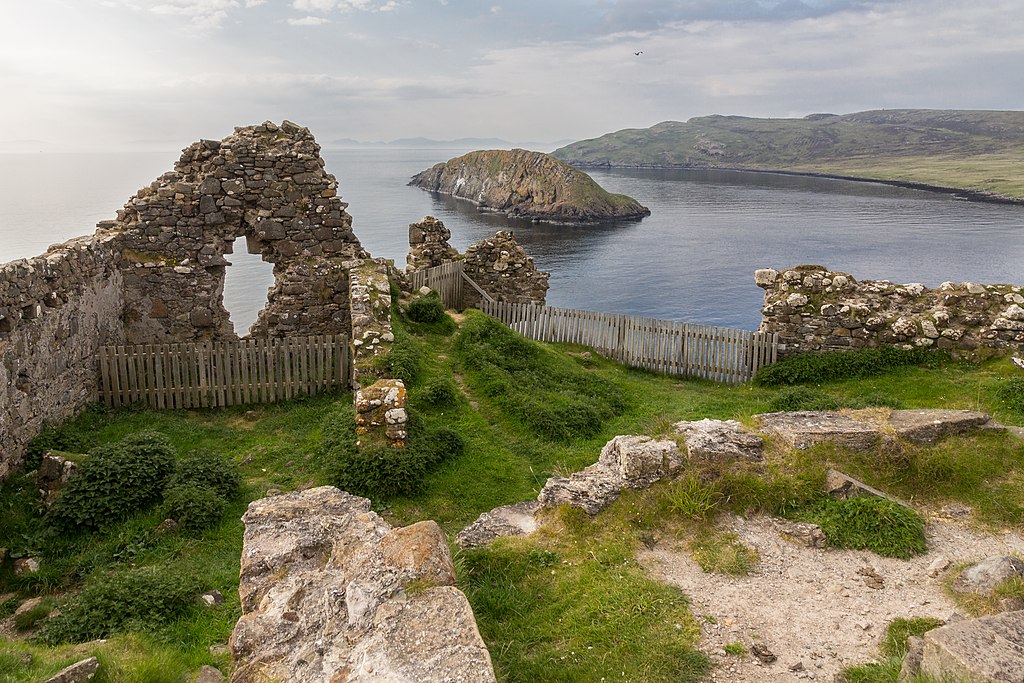
Duntulm Castle is located near Uig in Trotternish on the Isle of Skye. The 14th century fortification was built on the site of an Iron Age stronghold and was once held by the MacLeods.
It was forever lost to the MacDonalds after the Battle of Bloody Bay, c.1483, where the MacLeods of Harris and Dunvegan, and other non-MacDonald clans, fought for John, Lord of the Isles, against his son, Angus Og, Master of the Isles, and the MacDonalds, but suffered a catastrophic defeat, losing their Chief (William Dubh, 7th Chief of the MacLeods) and most of their warriors. Angus Og MacDonald, Master of the Isles, immediately after his victory, followed up his success by taking the Castle of Duntulm by surprise, and the MacLeods were never able to retake it. Indeed, within two generations, the MacDonalds had managed to drive the MacLeods right out of Trotternish, with the River Snizort becoming the new boundary between the two clans.
In 1540 the castle was visited by James V of Scotland and later on that same visit the king was reputedly entertained on the top of MacLeod’s Tables, flat-topped hills beyond Dunvegan. In 1618 the Privy Council and Sir Donald MacDonald of Sleat, “Donald Gorm Og”, the 9th chief, signed a charter, requiring him to repair Duntulm.[2] This was done, and a second tower was added. Around 1650, the castle’s importance peaked, when further improvements were made and a rectangular structure or house was built within the wall. Around 1732 the castle was abandoned, when Sir Alexander MacDonald built a new residence, Monkstadt House, 5 miles (8.0 km) to the south, robbing much of the castle’s stone as building material.[2]
Today, the castle lies in ruins, with only remnants of its walls and structures remaining. The site offers panoramic views of the surrounding landscape and the nearby Trotternish Ridge.
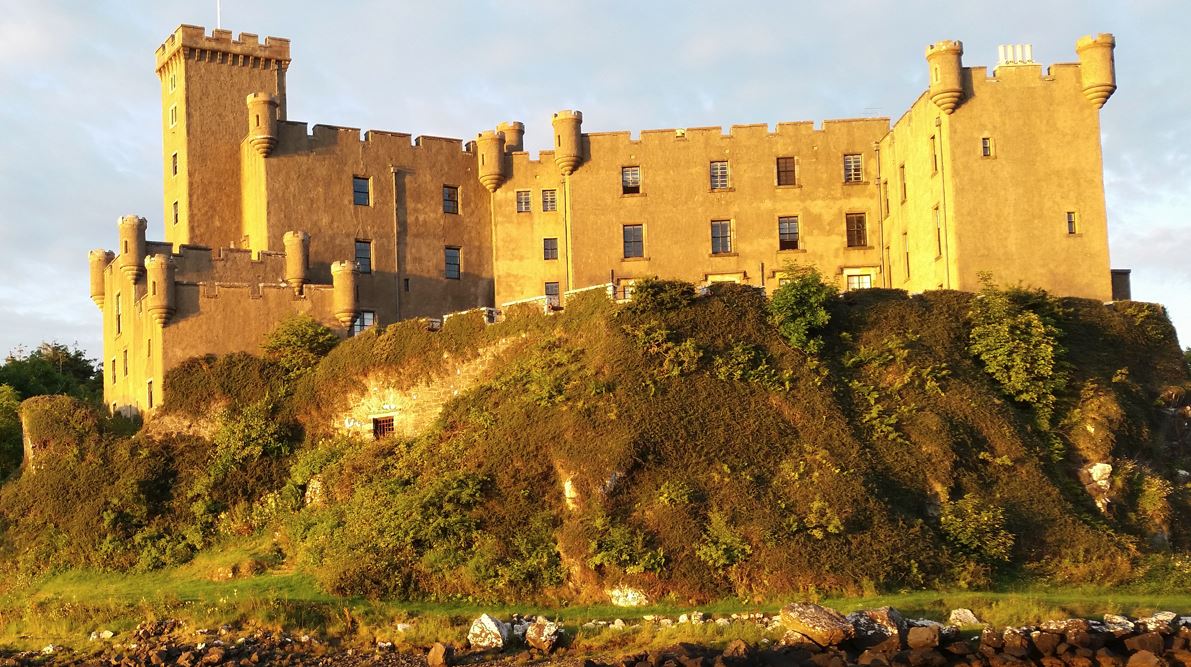
Dunvegan Castle
Dunvegan Castle in the north west of the Isle of Skye needs no introduction to MacLeods and has been the ancestral seat of the MacLeods of Harris and Dunvegan for around 800 years. The Castle has a rich history and has been expanded and modified over the centuries. It consists of a massive 14th-century tower, a 16th-century tower known as the Fairy Tower, which was built by 8th Chief Alasdair Crotach, a joining hall block from the 17th century, as well as a later wing. The castle was completely restored in 1840-50, and given ornamental turrets and battlements in the 19th century.
Dunvegan is one of the oldest continuously inhabited castles in the country, occupied by the chiefs of MacLeod since the 1200s and the time of the first chief Leod. Today the castle is a major attraction for visitors who are welcome to explore its magnificent architecture, extensive gardens, and discover the intriguing history of the Clan MacLeod.
Further details here: https://www.clanmacleod.org/about/dunvegan-castle/ and at the Castle website
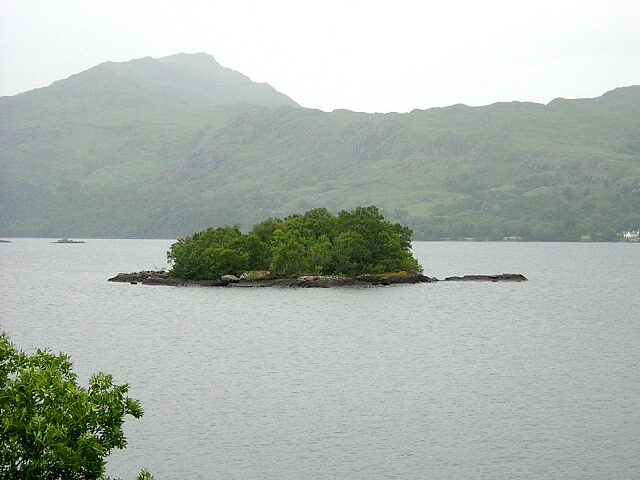
Eilean Ghruididh
Eilean Ghruididh, a ruined fortification on Loch Maree, is considered to have been a stronghold of the MacBeaths, who are presumed to have come here from Assynt during the 13th century. After their ousting from the area by the MacLeods around 1430 it may have passed to the latter family. The MacLeods themselves had lost control of the area by about 1513. The site may well have earlier origins and have acted as the natural equivalent of a crannog or dun.
On Eilean Ghruididh the natural rocky bank of the island appears to have been completed and heightened into a fortification by rude masonry cemented with clay. This fortification surrounded the island; the interior formed a tolerably level plateau, now much overgrown; on this plateau are slight remains of buildings, which in the present day are little more than mounds. At one place there is a deep hole with a circular wall round it; tradition says this was a dungeon. The area of Eilean Ghruididh is barely half an acre.
Sources include: J H Dixon (1886); B G Macrow (1953).
Coventry, Martin (2008). Castles of the Clans: The Strongholds and Seats of 750 Scottish Families and Clans. Musselburgh: Goblinshead. pp. 390–392. ISBN 9781899874361.
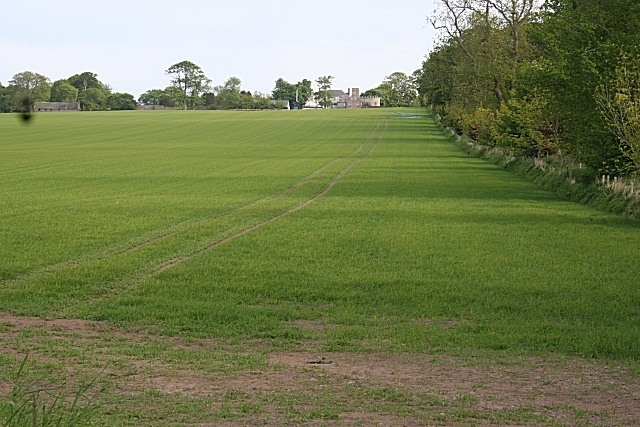
Geanies Castle
Geanies Castle, of which no visible remains survive, was originally sited in a field to the north of Geanies House and about 450 metres east of Mains of Geanies farmhouse in Tain, Ross-shire. Martin Coventry in Castles of the Clans (2008) states that the Castle was held by the MacLeod of Geanies branch of the clan but passed to the Clan Sinclair in 1624.
The earliest known owner of The Geanies is said to be Macleod of Assynt who built the present house in the early 18th century. His great-grandson added to Geanies House c.1800 and built the summerhouse. Additions and improvements to the farmland and the estate seriously affected the financial stability of the Macleod family and resulted in the sale of the property in 1826 to Kenneth Murray who was reputed to have been an eminent agricultural improver of the time. Whether the designed landscape was laid out by him or the previous owners is not clear. The dykes on either side of the oval lawn on the south front of the house which enclose the gardens were constructed c.1820 by local labour at a time of famine when potatoes were provided as payment.
Geanies Castle has been mentioned in the Clan MacLeod Magazine over the years, specifically in Issues 39, 86 and 93.
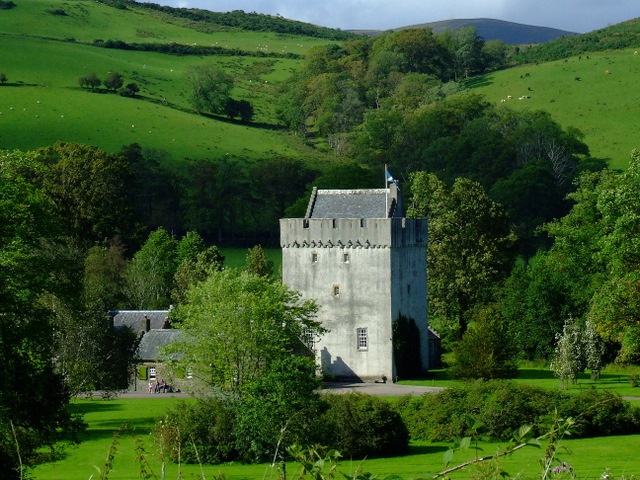
Kames Castle
Kames Castle is a 16th-century tower house located on the shore of Kames Bay near Port Bannatyne, on the Isle of Bute, Scotland. The castle, which is set in 20 acres of planted grounds, includes a 2-acre 18th-century walled garden.
Kames was formerly the ancient seat of the Bannatynes, a well-respected and powerful family who received a charter from King Robert the Bruce for their services at Bannockburn. Improvements to the tower were undertaken by the last in the line of Bannatynes – Sir William MacLeod, in the early 19th century. Besides being responsible for the walled garden, MacLeod also saw to the erection of a 2-storey, plain classical style house adjoining the keep. This was later demolished and replaced by the group of cottages which remain today. After a succession of owners, in 1863, Kames was encompassed within the Bute estate.
The last Bannatyne owner was Sir William Macleod Bannatyne (1743–1833), is closely linked to The Bannatyne Manuscript, which contains a traditional account of Clan MacLeod
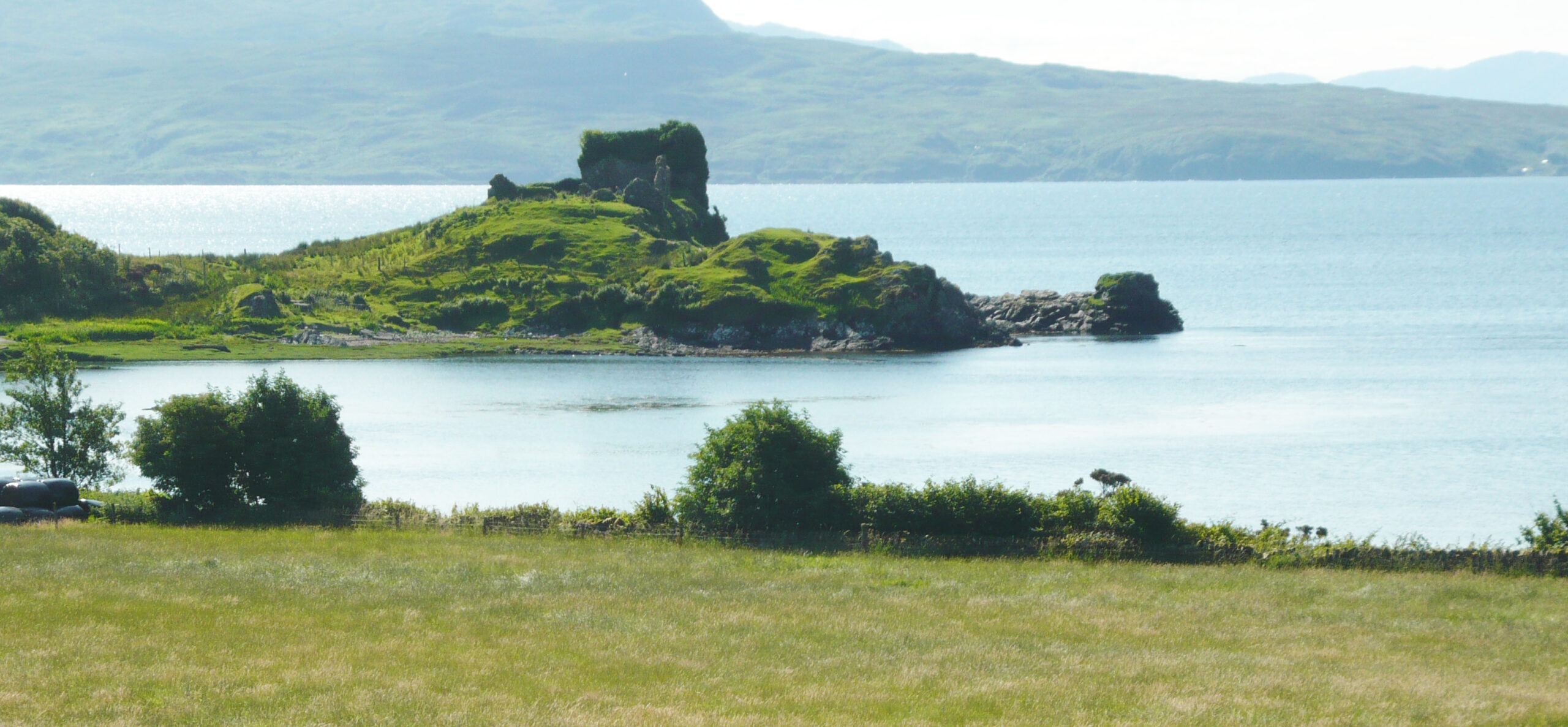
Knock Castle/ Caisteal Camus
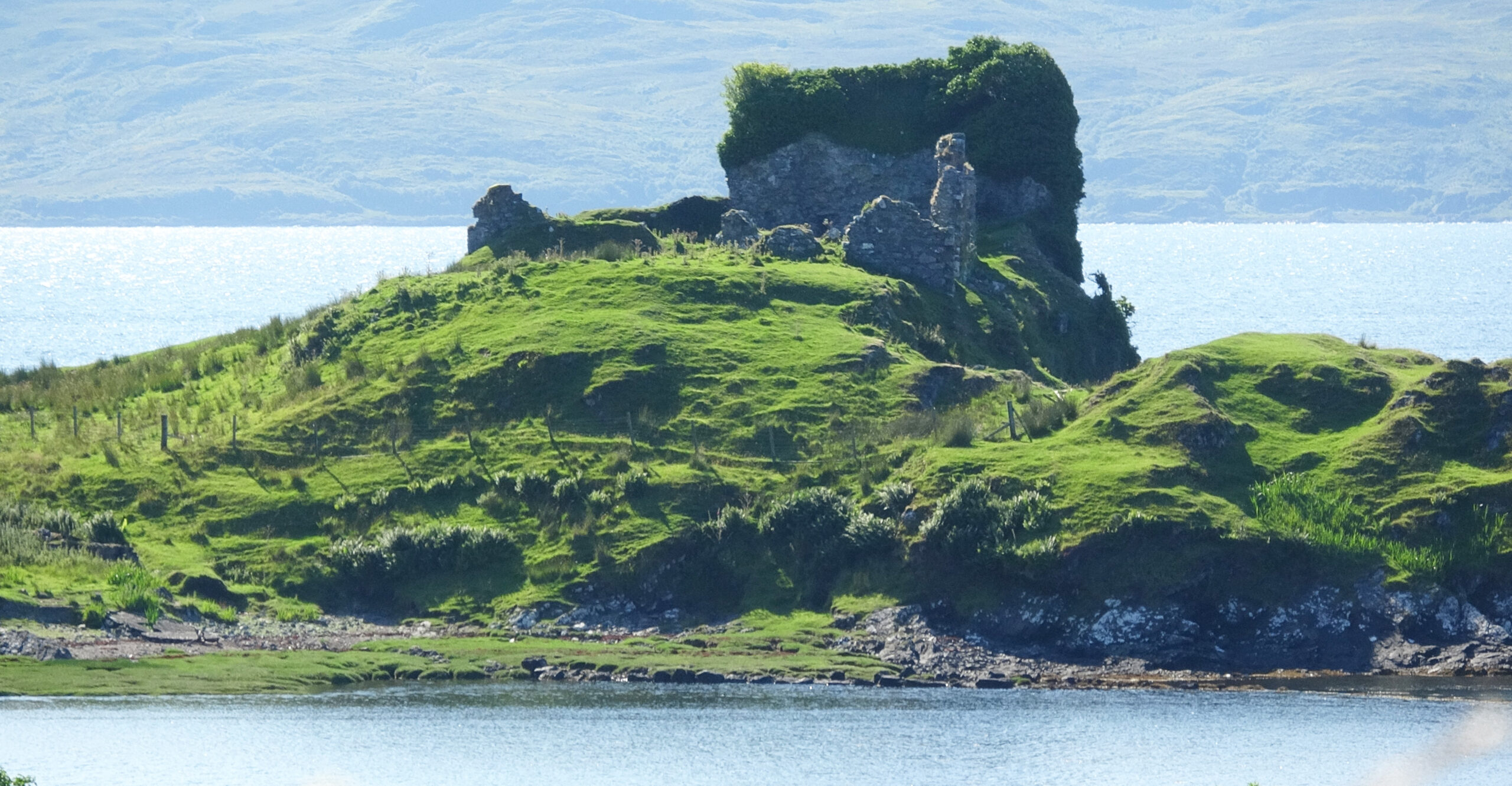
Knock Castle, on the east coast of Sleat on the Isle of Skye, and also known as Caisteal Camus and Casteal Chamius, was originally the site of an Iron Age fort called Dun Thoravaig or ‘Dun of the Bay of Thor’. It was built by the MacLeods in the 14th century and in 1402 William (The Cleric), 5th chief of the MacLeods, died in the castle, leaving his ten-year-old son and heir, Ian Borb, later 6th Chief, under the control of a tutor or regent. Knock Castle was held by the MacLeods until the mid-fifteenth-century c.1436 when, along with the rest of Sleat, it was taken over by the MacDonalds after the Lord of the Isles had acquired the Earldom of Ross (which then included Skye). In 1515, in an attempt to resurrect the Lordship of the Isles, the castle was unsuccessfully besieged by Alasdair Crotach MacLeod
The last reference to Knock as an occupied site dates to 1632 and by 1689 the castle was in an abandoned and ruined state. Extensive stone robbing, probably coinciding with the building and improving of the nearby House of Knock in the 18th and 19th centuries, would have destabilised the monument and significantly contributed to its present condition.
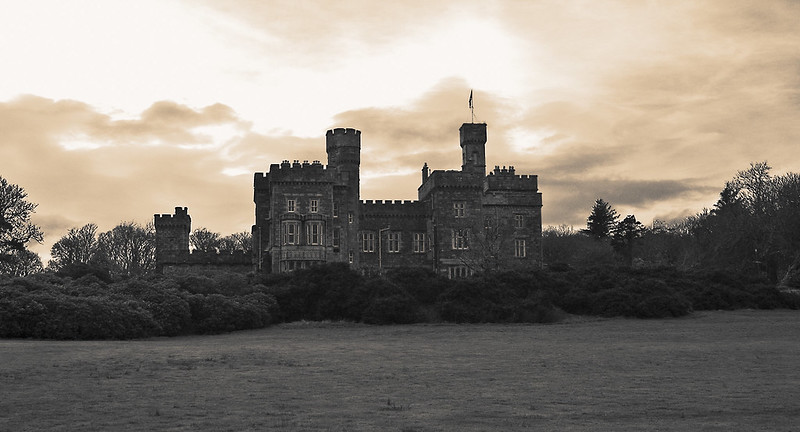
Lews Castle
Lews Castle is a substantial baronial mansion, set above Stornoway harbour on the Isle of Lewis in fine landscaped and wooded grounds. The building rises to two and three storeys, with corbelled-out crenelated battlements and tall round and square turrets. It was designed by Charles Wilson and dates from the middle of the 19th century.
The isle of Lewis belonged to the MacLeods but passed to the Mackenzies of Kintail at the end of the 16th century. They built Seaforth Lodge at the end of the 17th century and extended it in the middle of the 18th century, perhaps on the site of an older tower or house. Lews Castle was built on the site of Seaforth Lodge by Sir James Matheson, who had made his money from the opium trade in China, after he purchased Lewis and Great Bernera in 1844 from the MacKenzies.
Lews Castle is at a different location to the older and now vanished Stornoway Castle which once stood on a rock in Stornoway harbour (see below). Lews Castle has less connection to the MacLeods but is listed to distinguish between the two.
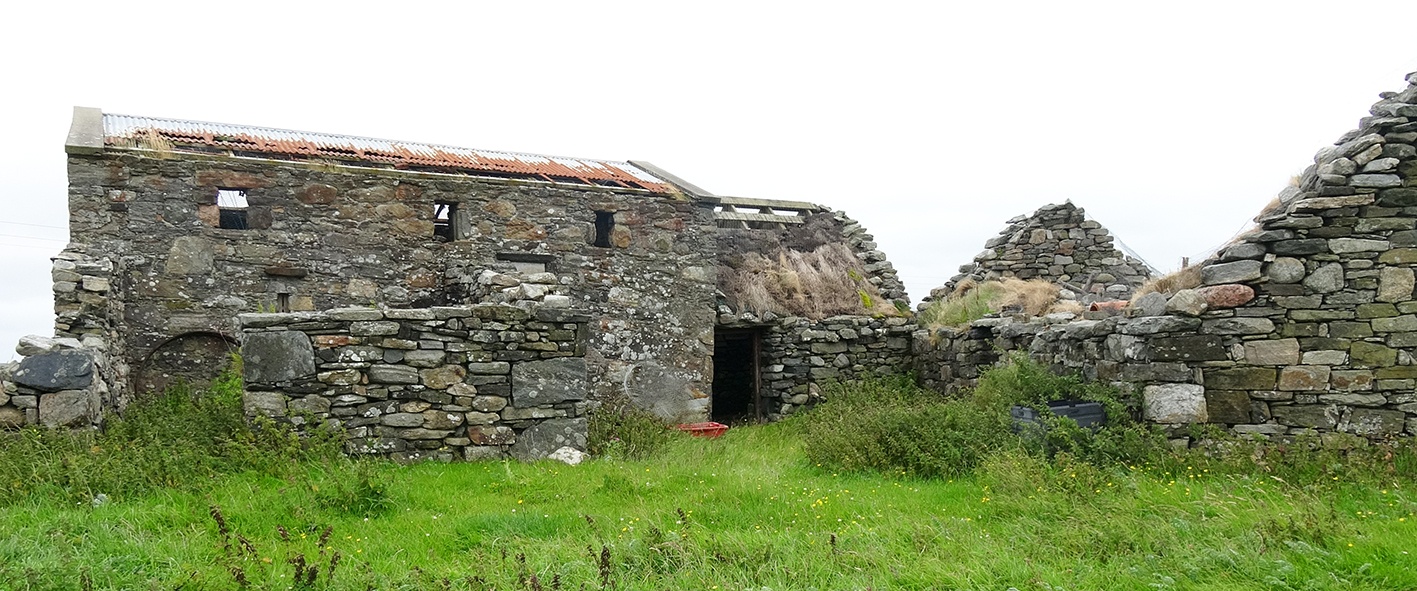
Macleod's Gunnery
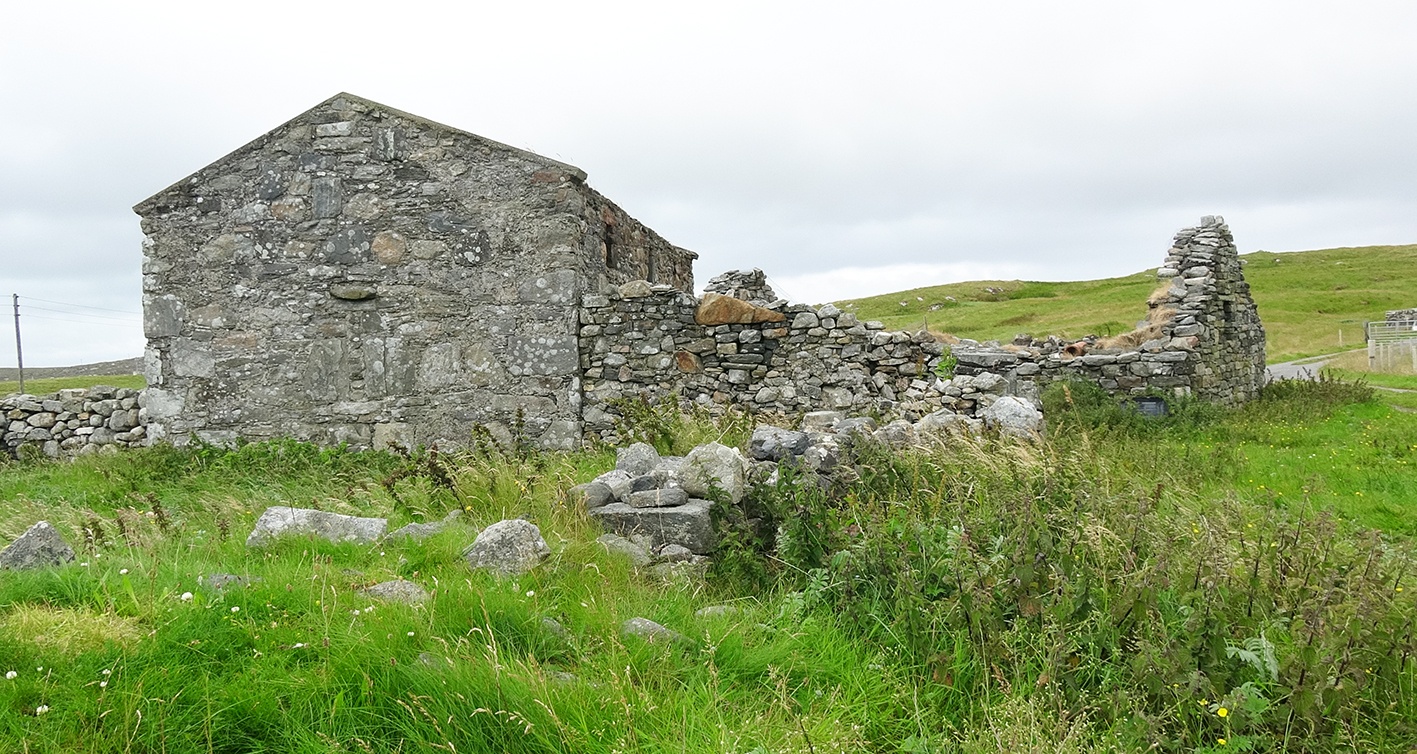
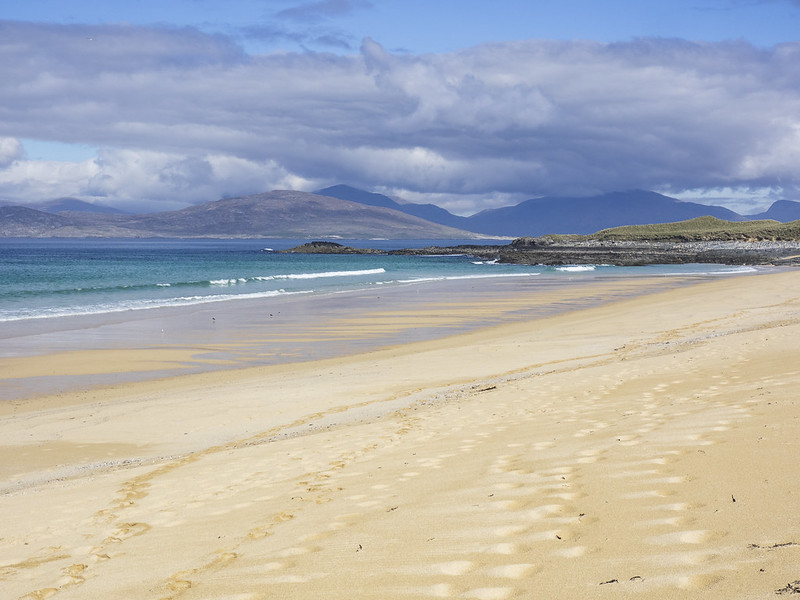
Macleod’s Gunnery situated close to the Youth Hostel is the oldest surviving building on the Isle of Berneray, near to Borve in North Uist, and dating back to the 16th Century. This was once the home of the famous 17th Century Knight Sir Norman Macleod of Berneray, who was the laird of the island, and was born there. He was a famous scholar and soldier who fought at the Battle of Worcester in 1651
A white marble slab above the Gunnery commemorates his birthplace. It bears the Latin inscription “Hic natus est ille Normannus Macleod de Berneray, eques auratus” – ‘Here was born the illustrious Norman Macleod of Berneray, a distinguished cavalier’. Close to the Gunnery are a cluster of traditional Black Houses, some of which have now been restored and are inhabited once again.
The buildings may have been used as the gunnery of the Macleods of Berneray or had a military use at some point.
The island of Berneray is one of 15 inhabited islands in the Outer Hebrides. The island came into the possession of the MacLeods of Harris and Dunvegan in the 14th century. The Berneray Macleods descended from this branch of the family. In 1633 Sir Norman Macleod of Berneray, third son of the 15th Macleod Chief, was granted a lifetime rent of Berneray (Miers, p.314). By the mid-18th century, Donald Ruadh Macleod improved the land and the kelp industry boomed. The island was sold to the 5th Earl of Dunmore in 1834. Intense cultivation and an influx of people cleared from other islands, meant settlements became very overcrowded.
The decline of the kelp industry, a succession of poor harvests, and the potato famine of 1846-51 led to a reduction in the number of crofts and large-scale emigration and forced removal from crofts occurred (Rowe, p.162). As a result, the population of Berneray declined during the later 19th and 20th centuries and crofting and cottar families turned to earning alternative livings.
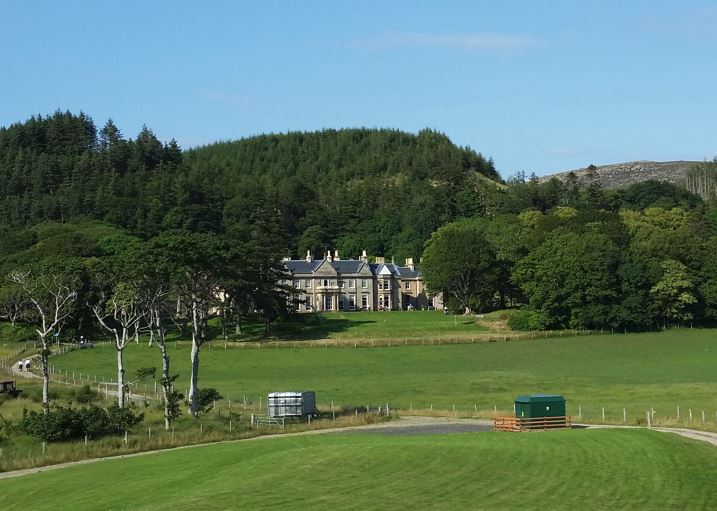
Raasay House
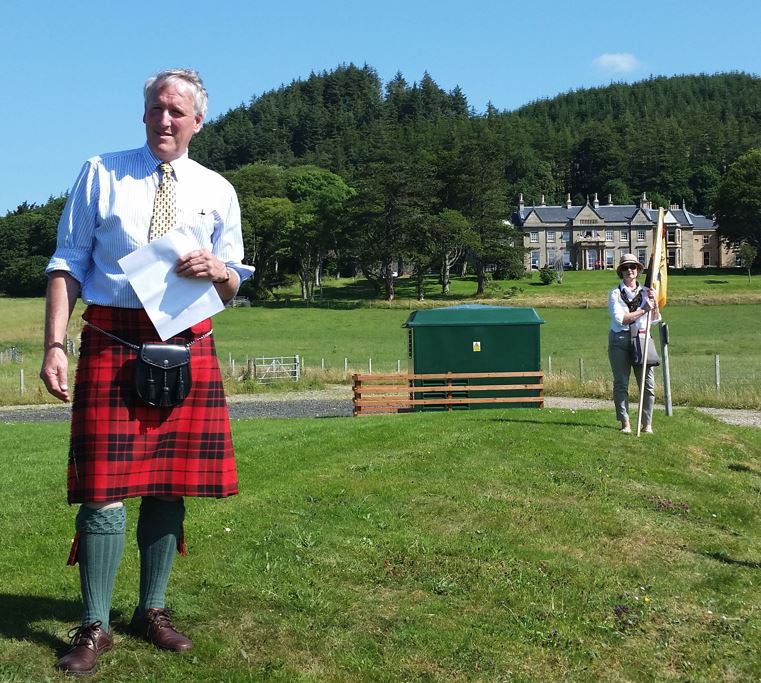
Raasay House was built initially in the early 1700s as a small, laird’s house by the Macleods of Raasay following their departure from Brochel Castle.
However, the new house itself had to be reconstructed only a year or so later when, in retribution for Macleod of Raasay supporting the Jacobite cause at Culloden in 1746, Government troops landed in Raasay, destroyed Raasay House and set fire to every other house on the island. Several decades later in 1773, this was noted in his diary by James Boswell during his Tour of the Hebrides with Dr Johnson, when they were entertained by the 11th Chief, John of Raasay, and greatly taken by the Chief and his family.
James, 12th Chief, (1761 – 1823) further improved the Raasay Estate and added a magnificent Georgian building to the front of the old house on Raasay. A change in farming practices combined with the disastrous summers of 1839 and 1840 and the failure of cropping efforts led to poverty and distress. The family moved further into debt by further additions to Raasay House. Tenant crofters couldn’t pay rents, over-population put demands on all resources, and as with many other Landlords and Highland Clan Chiefs, the Chiefly family of Raasay found themselves in financial difficulties. It was during this period that the region suffered because of the Highland Clearances resulting in the mass depopulation of the Highlands of Scotland.
The Estate was sold to George Rainy Esquire around 1843 and the remaining family emigrated to Australia. Since then, the house has undergone several upgrades and renovations. Much of the property was derelict when it began to operate as an activity centre in 1984. It transferred to community ownership in December 2007 and was due to reopen in Easter 2009 after the latest renovation works following a grant of £1m from the Big Lottery towards the estimated £3.5m purchase and renovation bill. Then on 18 January 2009 Raasay House was extensively damaged in a fire. The refurbishment had aimed to develop the business on a year-round basis, creating full-time employment opportunities for young people on the island and over the following years Raasay House was rebuilt. It now functions as a family hotel and outdoor centre providing employment for the local community.
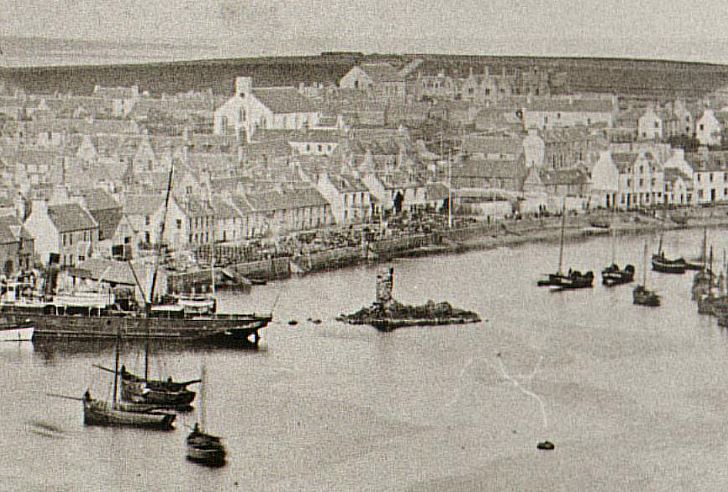
Stornoway Castle
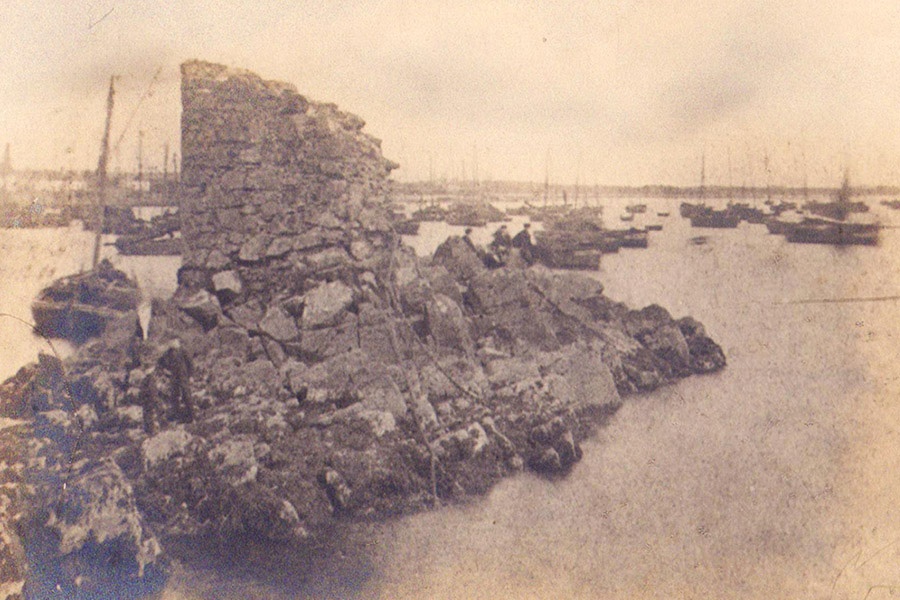
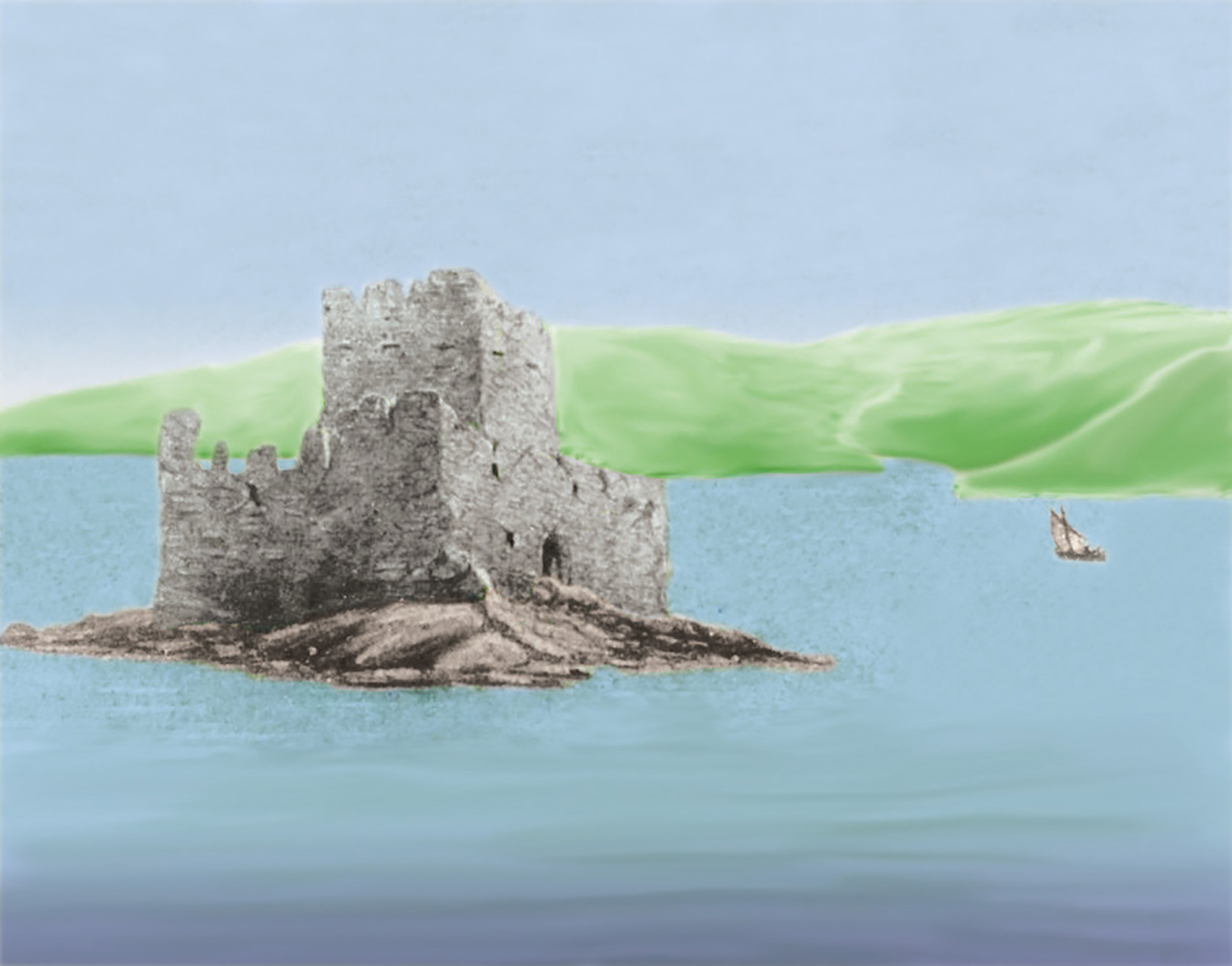
Stornoway Castle, Stornoway, Isle of Lewis, also known as MacLeod’s Castle, was held by the MacLeods of Lewis but an earlier stronghold on the site that may date from the 11th century was held by the Clan MacNicol prior to the MacLeods taking possession in the 13th century.
The castle occupied a rocky island in Anchor Bay just off the spur of land upon which Stornoway sits, offering a good degree of defence due to being separated from the town by a channel of water. What form the castle took is unknown however it may have looked similar to Kisimul Castle which occupies a similar island location in Castlebay on Barra.
The castle was captured by the Clan Gordon’s Earl of Huntly in 1506, the first historical reference, but managed to hold out against the Clan Campbell’s Earl of Argyll in 1554. It was demolished by Oliver Cromwell’s forces in 1653. Cromwell’s forces were themselves allegedly massacred by the islanders. By 1849 only a fragment remained and this, together with the rock on which it stood, were incorporated in 1882 into harbour improvements so that nothing of it now remains and its site has been incorporated into a modern pier.
The story of Stornoway Castle was published in issue 128 of the Clan MacLeod Magazine in April 2019 and is reproduced here by kind permission of Peter MacLeod.
